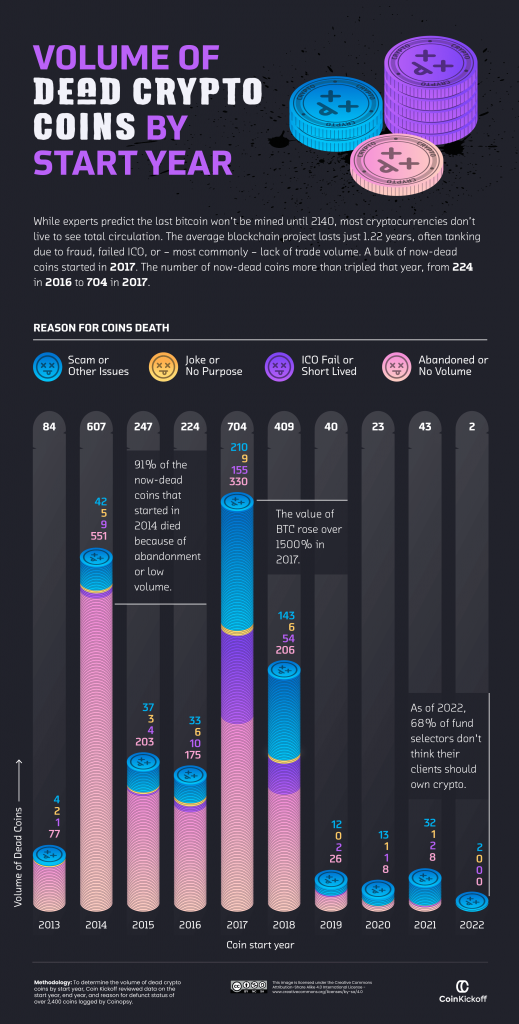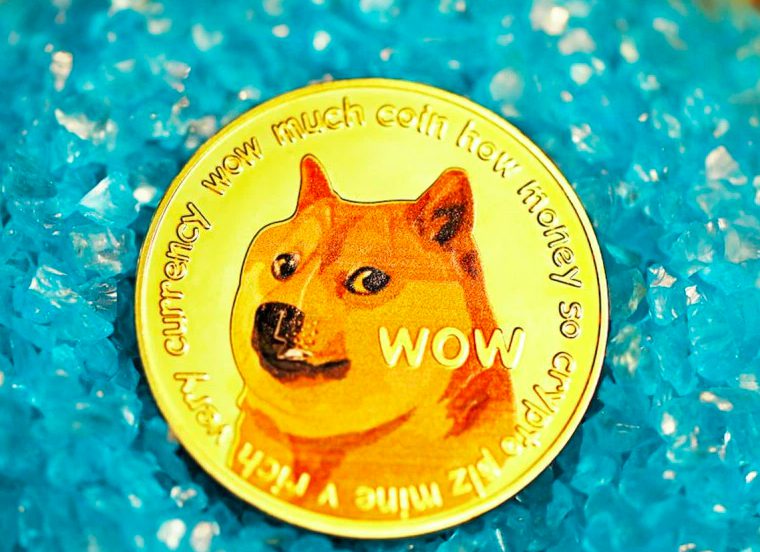Dogecoin started off as a joke currency or meme coin in December 2013. Of late, however, it has been taking its development game seriously. Towards the end of 2022, the foundation launched a new development fund comprising 5M DOGE. Alongside, the project has also achieved several other noteworthy milestones. In this article, we will analyze coins over the time period since Doge was created, and identify the change in availability.
Dogecoin Not Only Survives But Thrives
The crypto space noted its first major boom in 2013. In fact, that was also the year when Bitcoin surged from $150 to $1,000. As Bitcoin started gaining traction, a bunch of other coins was launched.
When the market conditions turned bearish, most coins did not survive the correction. A recent report from CoinKickoff revealed that 91% of cryptos from 2014’s crypto crash are now dead. Dogecoin, however, managed to stay afloat and remain relevant.
The report noted,
“The run on emerging cryptocurrencies in 2014 did not last. According to our data, 91% of coins established in 2014 eventually died due to low trade volume or abandonment. With the notable exception of meme currency Dogecoin, many opportunistic attempts to corner the early crypto market ended in failure.”


2017, on the other hand, has been identified as the “Summer of Love” by enthusiasts. That year saw a number of lucrative Initial Coin Offerings. However, it was not a bed of roses. The analysis report pointed out that 704 now-dead coins entered the market in 2017, the most of any year in the last decade. In fact, 80% of the offerings made in 2017 were identified as scams. A total of $11.9 billion was raised by those illicit projects.
Despite the evolution of the space, crypto scams have not stopped. In fact, over the last couple of years alone, they’ve drained billions from users. Despite this, less than 2% of coins established since 2019 have been outed as scam coins, rekindling hope.





